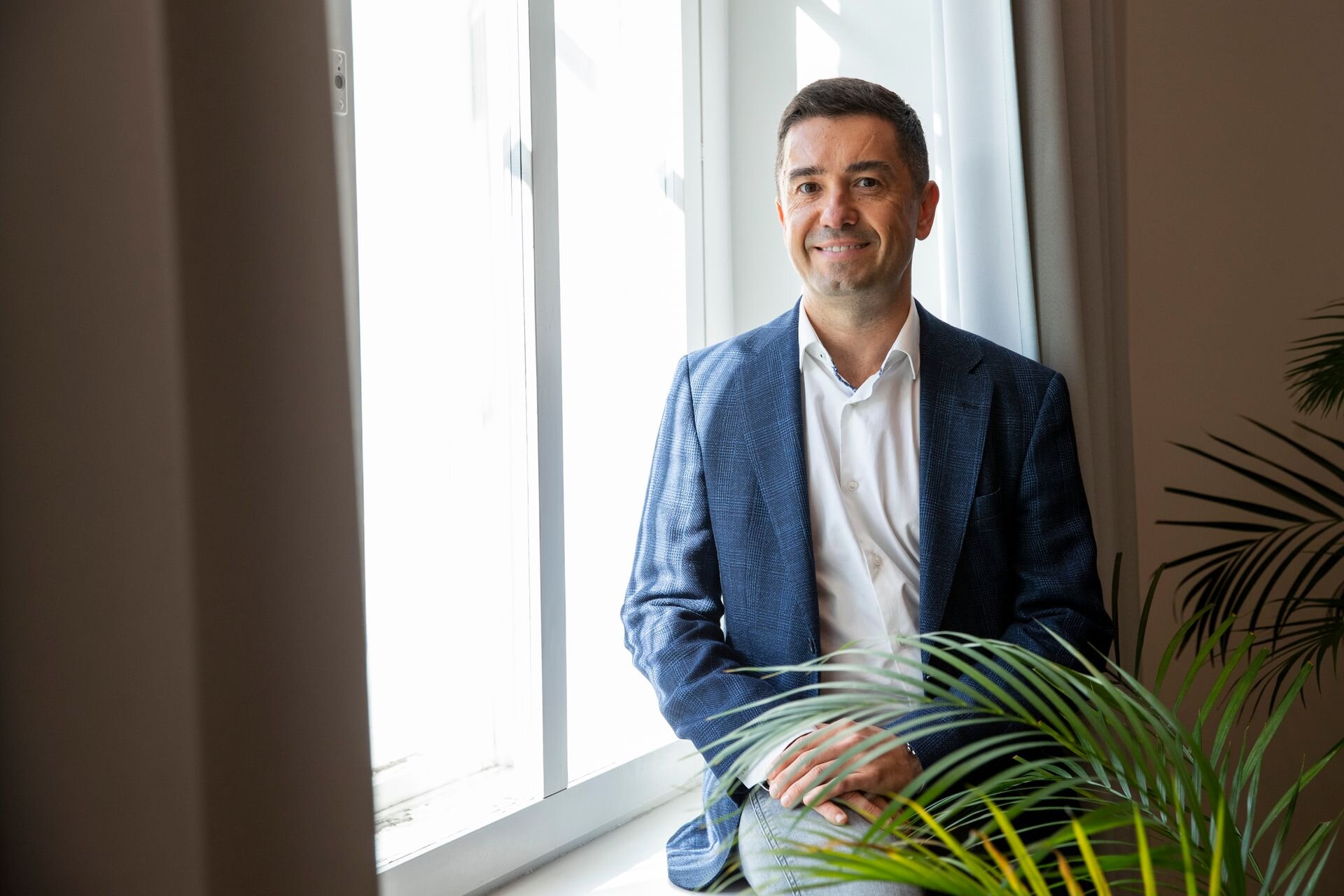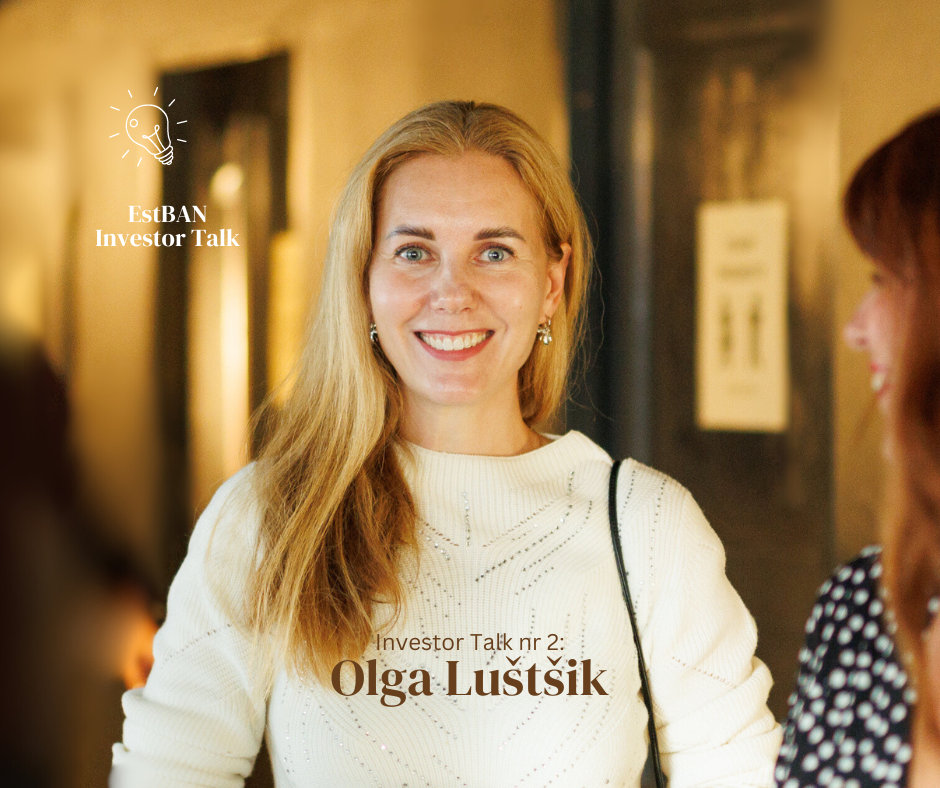The new president of the Estonian Business Angels Network EstBAN from the beginning of September is Lev Dolgatsjov.
The former president Kristjan Raude, who was elected in spring 2021, notified EstBAN of his intention to step down as he is starting a new position of business manager for the funding and trading platform Funderbeam. The former vice president Lev Dolgatsjov was elected as the new president by the EstBAN board and the new vice president is Lauri Antalainen.
Interview with the new president of EstBAN, Lev Dolgatsjov
How did you find your way to technology, entrepreneurship, and early-stage investing? Why have you decided to become involved in the start-up world?
To be frank, I must start from the fact that I was born in Siberia in the town of Novosibirsk. My mother and father have Slavic roots – my mom is from Tallinn and my father is from Ukraine. They studied in the same university in Leningrad. After they got their diplomas, the communist party congratulated them and deported the young family of cold store engineers to Siberia with the obligation of working there for at least three years.
For my mom to return to her homeland, they had to fictitiously separate, marry, and re-marry a number of times. Finally, at the age of 8, I arrived in Tallinn with my mother and sister. Two years later, my father followed.
I started my first business at the age of 13. I sold cacti that I grew myself at the Tallinn Central Market. The business was quite successful and at some point, I earned as much as my mom did. After that, I tried to live an organised life. At the age of 16, I started IT studies at Tallinn University of Technology. At the same time, me and my classmate started a punk rock band and there was not much time left for studying. For eight years, I was studying on and off but I never got the diploma.
During university studies, me and a couple of friends started our first real company – a computer and repair shop. After that, I tried the career of a fashion photographer and a visual media producer. I was also involved in two investment companies.
In the world of old-school investors, business is conducted by following long-term traditions but my restless soul was looking for excitement – something like punk rock. Maybe I’ll find this in start-ups, I thought.
I had a background in IT; I had studied computer technology, spent a lot of time in FidoNet, and had owned a computer shop but I still could not understand why someone would give Taxify (Bolt) and TransferWise (Wise) millions of their euros to burn. I joined EstBAN in order to meet these lunatics myself. From the first contact, I also got the disease. Now I am paying it forward in the Estonian investment community.
What makes the Estonian start-up world cool?
I’m amazed at how positive and optimistic our start-up ecosystem is and how people help each other. I am often asked what is behind the success of Estonian start-ups and I’m convinced that our “secret” is open cooperation and being helpful. Founders, angels, venture capital funds, national foundations, incubators, event organisers – they all play a part in our success.
The only thing that’s not so good is that the community of Estonian angel investors has a low number of investors of Slavic origin even though they have great potential. It is great that we are building relations with international angels but we could also use our internal resources better. Let’s see if something can be changed about that.
What are you looking for in start-ups who pitch to you and other investors?
I’m always looking for a strong team who has already been able to somewhat validate their idea in the market. An idea alone is not enough – I want to see product-market fit, team-product fit, and team-market fit. In other words, the alignment of team, market, and product.
The team must also have a clear vision and strategy of how to quickly scale their ideas.
Another important factor is the ownership structure of a start-up company. It is not reasonable to give a large share to the so-called passive investors, be it a greedy angel investor or a team member who has lost their motivation and who is not contributing anymore but still has a large number of shares in the start-up.
How do you find joint investment projects that interest you as an angel investor?
There’s plenty if you are active yourself. I do not have to make a lot of effort in order to find investments. The possibilities arise through EstBAN, other angel investors, and venture capital funds. It also happens that founders recommend angels to each other with whom they have had positive experiences. I’m also keeping an eye on business incubators in order to notice potential future talents today.
What has been your most important investment and why?
My most important investment and team in the start-up world has been, no doubt, EstBAN. I joined EstBAN in 2018 and these three years have been my most intensive years of self-development. I have learned a lot from lecturers and mentors at the EstBAN events and from other investors, founders, books, and interviews with successful investors.
My vision and investment philosophy improve every day. For that, I’m really grateful to all my teachers.
When speaking of start-ups, it’s hard for me to single out only one. I’m “in love” with all the start-ups of my portfolio and I’m proud of all of them.
What were your mistakes as a beginner investor and what have you learned from your mistakes?
I immediately started with big-ticket investments and great enthusiasm around them.
A rule of thumb is that a starting angel investor should not invest more than 10% of their investment portfolio in this category.
This 10% should be divided between 30 investments at least including 20 different start-ups and 10 follow-ons. I did not follow this simple rule and immediately started investing too much money in the start-ups in my portfolio.
An investor can, of course, when they already have more experience and higher risk tolerance, invest more than 10% of their profile into start-ups. But I do not recommend this for a beginner.
I do not recommend investing in start-ups in the first 2-3 months as this is a time when the investor is still doing research. The start-up world moves fast and at times, quick reactions and quick decisions are needed. However, a smart investor takes their time and becomes familiar with the topic before investing their money.
How do you assess start-ups? Does it take a long time to make a decision or are you an emotional decision-maker?
I’m a quick decision maker but I try not to rely on emotions only. When I feel too excited, I take a break for a day or two in order to come to a logical decision.
During the assessment process, I pay attention to whether the company has reached a point in their development that interests me. I’m looking for a fit between the team, the product, and the market. I make sure that the active team has the majority of the shares. I think of whether I like the team and whether I, as an investor, click with the team, and whether and how I can be of help to them. I check whether the business has potential for fast and large growth, whether what they are doing is legal and moral, and whether they are frank with their clients and investors.
I often discuss things with other angel investors. Most times, others have information about the start-up that is new to me. If possible, I also communicate with the clients of the start-up. I also see whether other angels or VC funds have already invested or are going to be investing in the start-up.
I believe that successful investment is a team sport and that the Estonian start-up ecosystem has plenty of top players.
What is the trend you keep your eye on the most – is it still B2B SAAS or should other trends also be paid attention to?
I’m still enthusiastic about B2B SaaS (software as a service) but I also follow new trends. For example, logistics, IoT (internet of things), and deeptech.
When should one stop being an angel investor? What does your investment strategy look like timewise? What is your next role in the start-up world?
When I was joining EstBAN, our CEO Anu Oks asked me whether I can explain in one word what my motivation for being here is. I answered: “No problem. Money. I want to make money.” What actually happened was that I realised that EstBAN was more than just about money – it was about development, communication, ideas, new viewpoints, acquaintances, and friends. To explain it in one word – networking.
I do not think I’ll stop being an angel investor – it has become my lifestyle. I’m not here for the money, I’m here rather for the beauty of the game. This is the most exciting asset class in the world and I’m enjoying every second of being a part of our start-up ecosystem. Let’s see what life brings but I’m quite sure that my personal journey in this field is just starting.




